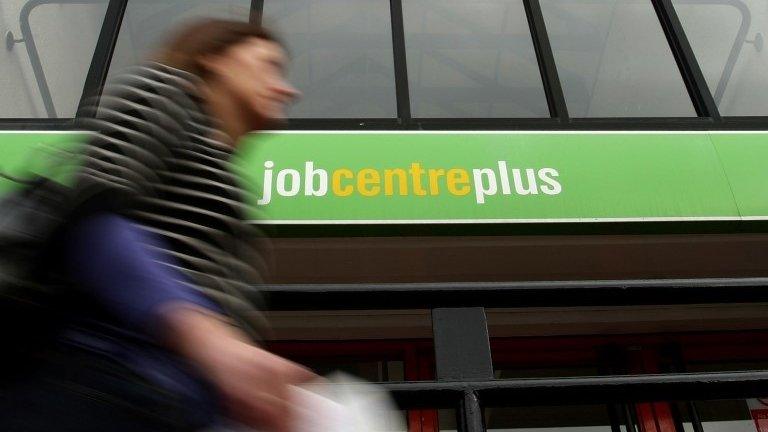Unemployment rate gap widens between Wales and UK
- Published
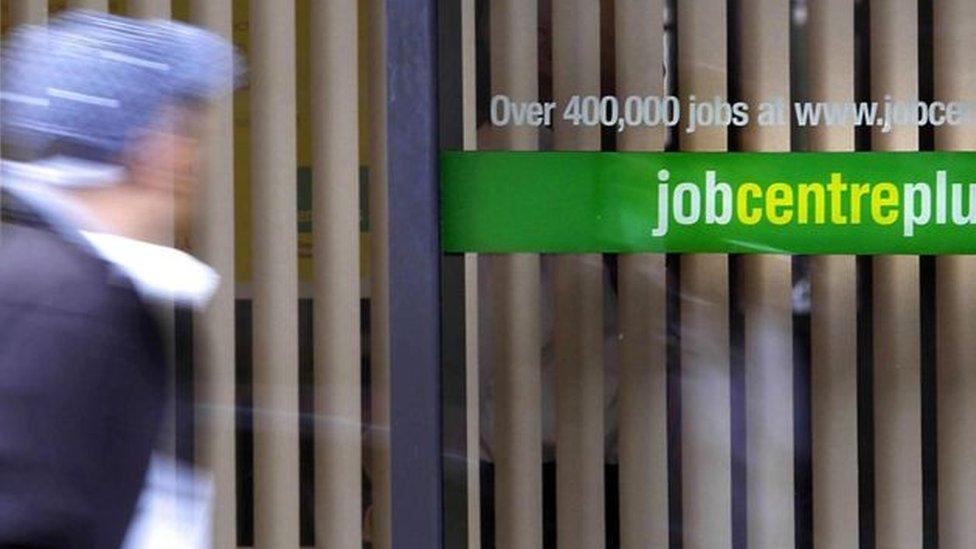
Unemployment in Wales has fallen again and the gap between rates in Wales and the UK continues to widen.
The unemployment rate in Wales between May and July has fallen to 4.1% while for the UK as a whole it remains at 4.9% for a third month.
The number of people unemployed in Wales is 63,000, 10,000 fewer than three months earlier and down 35,000 for the same period a year ago.
The fall in unemployment is steeper in Wales than the UK as a whole.
However, according to the latest figures from the Office for National Statistics, external, the overall employment rate in Wales - at 73.2% - is still below the UK average of 74.5%.
Employment in Wales between May and July was 18,000 higher than the previous quarter, February to April.
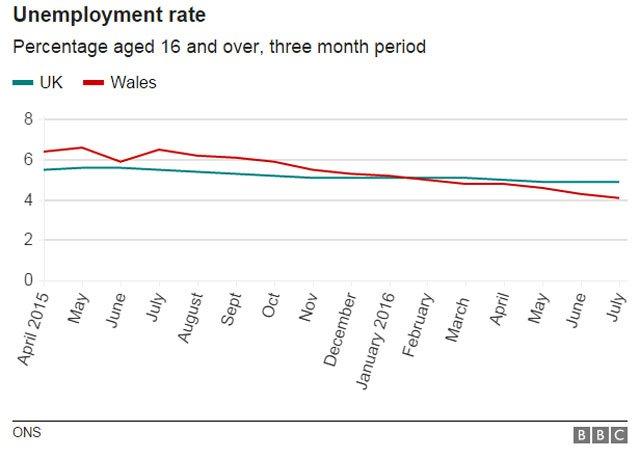
The fall in unemployment in Wales is proportionately the biggest fall of all the nations and regions of the UK for both the previous year (May-July 2015) and the previous quarter (February-April 2016 ).
Between May and July, Wales saw a fall of 0.7% compared with February and April and a 2.3% fall compared with the same period a year earlier.
For that comparison Wales was a long way ahead with the next greatest fall, of 1.2%, being in Scotland
While the latest ONS figures cover the period of the EU referendum, it could be too early to come to any assumptions or conclusions in terms of the Brexit vote and its effect on employment.
On the whole, it takes companies more than a couple of months to hire or fire employees and for this to appear in the official statistics.
Responding to the statistics, First Minister Carwyn Jones said: "This is all excellent news for the Welsh economy, but there is no time for complacency.
"We will continue to work hard to support business and create the economic conditions to create and safeguard sustainable jobs right across Wales.
"We continue to have big ambitions for Wales and its economy and are determined to deliver on them for the people of Wales."
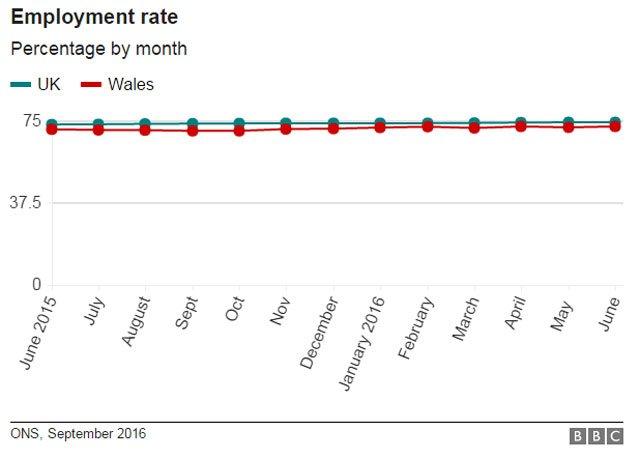
Welsh Secretary Alun Cairns added that the "record-breaking data" on jobs was testament to the ability of the Welsh economy to create jobs and reduce unemployment.
"We are seeing more people in work than ever before and the jobless rate at a historic low as the Welsh employment market rapidly closes the gap on the rest of the UK," he added.

Mr Cairns also said that welfare reform had played its part with some of the sharpest falls in unemployment in places like Merthyr Tydfil, Blaenau Gwent and Caerphilly.
"Going back to work now makes better financial sense than ever, and we are ending the culture of homes with no history of a parent in work which has blighted some parts of our country," he said.
Since 2013 we can see that there has been a significant fall in unemployment in some of the areas of Wales that have struggled most to increase jobs.
Blaenau Gwent stands out as one of those areas. What the figures in the chart above do not tell us, is whether those jobs are low skilled or high skilled, how many hours they account for nor how long term they are.
Despite the fact that Wales has a lower rate of unemployment than the UK, it also has a lower proportion of 16-64-years-olds working - 73.2% in Wales compared with 74.5% for the UK.
If one is trying to assess the strength of the economy, you cannot look at unemployment and employment figures in isolation.
The fact that Wales languishes at the bottom of the tables for productivity (or gross value added) suggests that despite enjoying the greatest fall in unemployment of all the UK's regions and nations, many of those jobs cannot be of high value economically.
Federation of Small Business Wales policy chairwoman Janet Jones welcomed the figures but added: "We need to ensure that the jobs that are being created are sustainable over the longer term, and that no part of Wales is being left behind, especially with the uncertainty facing businesses in the wake of the referendum vote."
- Published14 September 2016

- Published17 August 2016
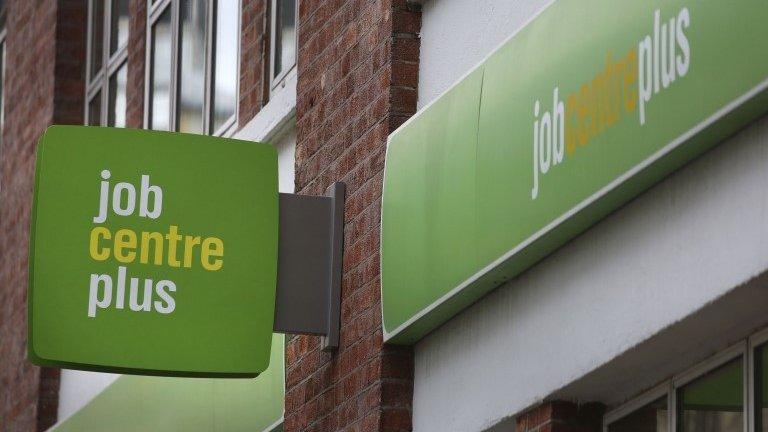
- Published20 July 2016
